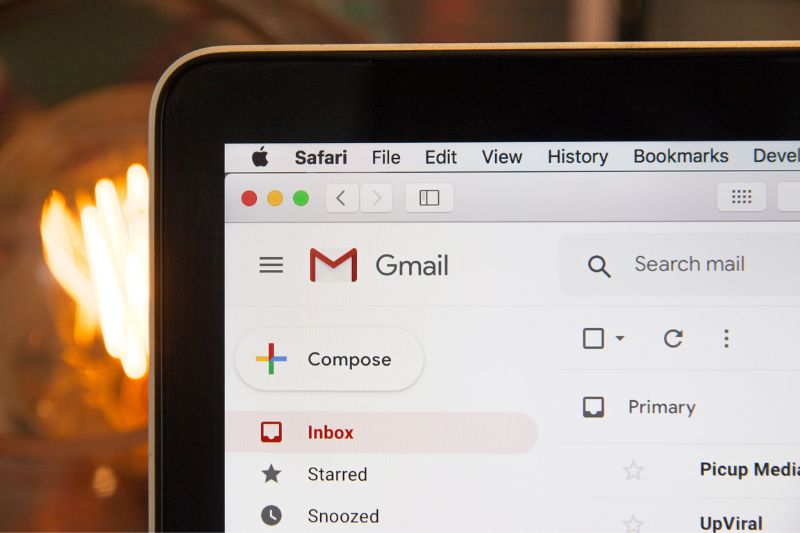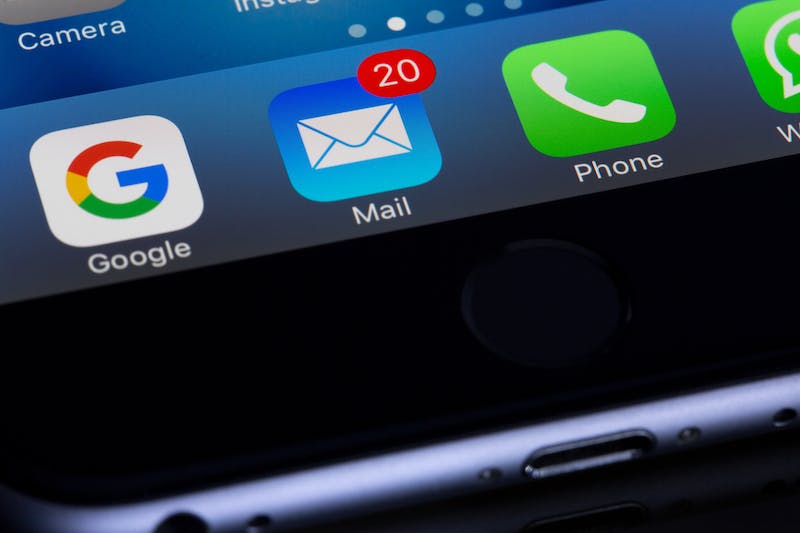To this day, email remains a powerful communicative tool, with over 4.2 billion active users worldwide in 2022. This figure is expected to surpass 4.7 billion by 2026.
While many doubt about the effectiveness of email blast campaigns may exist, recent research stresses their continued relevance. When executed correctly, email blasts can significantly boost your email marketing strategy, serving as a dynamic means to engage and win over customers.
Thus, addressing concerns such as spam folder placement and the details of successful email marketing campaigns is crucial. Want to know more? Continue reading to find out how to send an email blast effectively.
What is an Email Blast
Email blasts, also known as e-blasts, mass emails, broadcast emails, etc., send one single email to a large email list. They are mostly used for sending newsletters and promotional content. They can also be quite an effective strategy to get sales; many use it to get more website traffic for their blogs.
But, since the recipients are not explicitly targeted (which is why it is called ‘blast’), these usually come under the spam category. These emails typically fall on deaf ears and are fruitless.
However, as we already mentioned, while email blasts have many pros, you can only enjoy them if you do it the right way.
Are Email Blasts and Email Campaigns the Same?
Email blasts and email campaigns are often used in the context of email marketing, but they have different implications and are used to describe distinct approaches-
Email blast: An email blast refers to sending a single message or a set of identical messages to many recipients simultaneously. It is a one-time mass distribution of an email message to a broad audience.
Email blasts are often used for time-sensitive announcements and promotions relevant to a wide audience at a particular moment.
Email Campaign: An email campaign is a broader and more strategic approach to email marketing. It involves sending a series of targeted and coordinated email messages to a specific group of recipients over a period of time.
Email campaigns are planned and structured and may include multiple emails sent at different intervals, each serving a specific purpose in a predefined sequence.
Email campaigns are often used for lead nurturing, customer onboarding, product launches or other scenarios where messages can guide recipients through a marketing funnel.
Are Email Blasts Risky?
Email blasts can be risky if not executed strategically and carefully. How so?
Well, firstly, recipients can mark your emails as spam, which might result in your emails being flagged by service providers and damaging your sender’s reputation.
Secondly, broad email blasts may increase unsubscribes, affecting your overall subscriber base and potential customer support.
Thirdly, mass emails may lack relevance to all recipients, resulting in lower engagement rates, which can harm your email deliverability rates. Consistent negative feedback can further damage your sender’s reputation, increasing the chance of emails being marked as spam.
Finally, legal compliance issues may arise, with different jurisdictions having regulations like the CAN-SPAM Act and GDPR. Failure to comply can result in legal consequences. To mitigate these risks, it’s essential to follow best practices.
How to do an Email Blast the Correct Way
1. Choose the Best Email Service Provider
A dependable email service provider is essential to kick off a successful email marketing campaign. These providers play an important role in enhancing your email marketing strategy in several ways.
- assist in converting website visitors into email subscribers by implementing popups, sign-up forms, landing pages and other effective generation tools.
- contribute to your emails’ visual appeal and functionality by helping you design and craft captivating email templates that display seamlessly across all devices.
- facilitate the testing and verifying of the email templates, ensuring they are error-free before being sent out.
- Your email marketing software should also provide access to essential metrics, including open rates, which gauge the efficacy of your subject lines and overall email reception. Click-through rates reveal the percentage of an engaged audience and assess how effectively your emails guide recipients to the provided links.
InboxAlly offers many features, from tracking progress on your dashboard and enjoying the flexibility of setting your sending schedule to improving engagement rates and deliverability. Try InboxAlly to minimize bounce rates and maximize your email deliverability.
2. Create Your List and Segment
Build your own email list. You can do so by encouraging users to subscribe by providing them with valuable information and incentives.
After you’re done creating your list, it’s time to segment it. Why is it important? Email marketing segmentation transforms generic messages into personalized ones, which helps resonate with your audience.
An email marketing tool allows you to efficiently segment your messages to recipients based on factors such as age, gender, geographical location, purchase history, contact activity, etc.
We suggest you use A/B testing to identify what works best with your audience.
3. Design Your Email
Creating an effective email goes beyond just writing and adding images. The success of your email blast depends on carefully managing different parts, each crucial for grabbing and keeping the readers’ attention. To make your email more impactful, you should focus on the subject lines, the sender’s name and address and the message itself.
The sender’s name and an exciting subject line are like the gatekeepers determining if your email gets opened. This is why you should pay attention to how you identify your recipients’ inboxes.
A key part of the subject line should be tested and refined through methods like A/B testing. You can experiment with emojis, word count, personal touches, and brand recognition.
4. Include a CTA
A compelling Call to Action (CTA) is crucial for guiding your recipients toward the desired response.
Whether It’s encouraging them to make a purchase, sign up for a new letter, or engage with your content, a well-crafted CTA can significantly boost your emails’ effectiveness. Make it concise, clear, and strategically placed within your message.
An enticing CTA enhances user engagement and contributes to your email campaign’s overall process. Don’t forget to test different CTS to discover what resonates best with your audience.
5. Include a Clear Unsubscribe Option
You should be transparent and have respect for your audience’s preferences. So, provide them with a clear unsubscription button. This not only complies with legal requirements but also builds trust with your subscribers.
Make the process easy, allowing your recipients to opt out easily. You can boost your sender’s reputation by respecting their choice and maintaining a positive relationship with your audience.
6. Track Your Results and Improve Deliverability
Monitoring the performance of your email campaigns is essential for ongoing success. Utilize analytic tools to track a matrix, such as open rates, click-through rates, and conversion rates.
Analyzing these results provides valuable insights into the effectiveness of content and helps you make data-driven decisions for improvement. Additionally, focus on maintaining good delivery by regularly cleaning your email list, avoiding spammy practices and adhering to email marketing best practices.
Consistent monitoring and adjustments based on insights will elevate your email campaigns over time.
What is a Good Open Rate For an Email Blast?
Many businessmen and entrepreneurs often ask, “ What is a good open rate for an email blast?”
To know the answer to this question, you first need to understand the factors that affect the opening rate of an email blast. The subject line, the sender’s information, and segmentation can influence the open rate.
Now, to answer the question of a good opening rate, we’d say anything between 15%-20% is a good email open rate. But it’s not really that simple.
It’s crucial to differentiate between open rates on mobile devices, desktops, and tablets to understand an email open rate and discern effective strategies with your audience.
Furthermore, various industries have distinct email marketing benchmarks, making it beneficial to know the average rates within your specific sector.
Mailchimp says the average open rate across all industries was 21.33% in 2019. If you are looking for ways to boost your emails or stressing about why your email blasts are not yielding good results, consider using email tracking software.
This tool provides comprehensive engagement reports, including open rates, click-through rates, bounce rates, and more.
Using email marketing software offers a lot of advantages for email marketers. First and foremost, it allows users to generate in-depth engagement reports that provide detailed insights into the performance of their email campaigns.
They also compare the different email campaigns to see what works best. The software makes it easy to segment contacts, improving the relevance of your emails and boosting results.
5 Email Blast Examples
1. Product Announcement Email
Imagine a tech company launching a new smartphone model for a product announcement email.
The content of the email should showcase the sleek design, the advanced camera features, and benefits like longer battery life.
It should also have a compelling call to action button that directs recipients to a dedicated landing page for pre-orders or more details
2. Flash Sale Email
For flash sale emails, imagine an online fashion retailer having a 24-hour flash sale. The email should feature bold visuals of discounted clothing items clearly stating the limited-time nature of the sale.
Discount details such as “50% of select styles” would be prominent. Urgency can be conveyed through phrases like “Hurry while supplies last!” and a direct link to the online store.
3. Event Invitation Email
Suppose a software company hosts a virtual webinar on the latest industry trends. The email would provide a precise date and time for the event, brief descriptions of key topics to be covered, and the names of expert speakers.
Eye-catching visuals related to the webinar content could be used. The RSVP button should be prominently placed for easy registration.
4. Newsletter Update Email
For a newsletter update email, let’s take an example of a Lifestyle brand. It has a diverse product range and is sending a monthly newsletter.
The email should include engaging content, a featured article on wellness, highlights of new products, and a behind-the-scenes look at the company. Each section would have a captivating image, and calls to action would encourage readers to explore the brand’s website more.
5. Feedback or Survey Email
For a survey or feedback request email – imagine you own an e-commerce company and you are seeking customer feedback on their shopping experience.
The email should briefly explain that the company values the customers’ opinions and is conducting a quick survey to improve services.
A direct link to the survey would be provided, and there might be an incentive, such as a discount code for completing the survey. The language would convey appreciation for the customers’ time and input.
Conclusion
We hope this article was helpful in understanding what an email blast is and why it is important.
So, are you ready to elevate your email marketing game? With InboxAlly, you can repair and boost deliverability on any IP/domain across platforms and take control of your campaigns! Take charge of your outreach today with InboxAlly!





